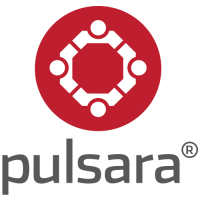By EMS1 BrandFocus Staff
The following is paid content sponsored by Pulsara
Background
In a rural area northeast of Texas, Good Shepherd Medical Center is a primary stroke center - one of only two in the relatively large area that they cover. As such, the 426-bed hospital receives a lot of transfers—EMS flying in or driving in patients from other facilities up to 60 miles away.
Problem
Being the primary stroke center for such a large area is no easy task—even with excellent facilities and a well-trained staff. Good Shepherd faced the same challenges as any hospital: there was no good way to keep everyone on the same clock - and on the same schedule—when it came to stroke patients. The lack of a consistent synchronized clock - with some using a watch, others a computer clock, and still others using a cell phone - meant a whole lot of uncertainty. Staff faced the challenge of not knowing if everyone else had the same information, if they were on the same schedule, or if they were ready for the next stage of the process. It also presented challenges in sharing information between teams.
From an infrastructure standpoint, all the pieces were there. The hospital had great personnel and first-rate facilities, but a door-to-needle time that routinely clocked in at over 60 minutes. In 2012, the average door-to-needle time hovered between 70 and 110 minutes.
When you’re dealing with stroke patients, every second counts. Cutting this crucial metric down ultimately means a better quality of life and better outcomes for patients.
Solution
Good Shepherd Medical Center looked to improve their door-to-needle time by leveraging Pulsara, a new mobile technology that links the entire emergency response team together using a single app to share patient information, benchmark times, and records across multiple devices. Once activated from any mobile device, Pulsara alerts critical care team members down the line, ensuring that everyone remains updated in real time. Critical care members are ready to go when the patient is, EMS knows where to take the patient before they arrive at the hospital, and pre-registration information is given before arrival - shortening the patient’s journey to a definitive treatment.
The adoption of Pulsara didn’t require Good Shepherd to change any other protocols or processes, merely to add a uniform method of communication, which was a relatively painless process. As the Stroke Program Coordinator, Jennifer Reed organized a monthly Stroke Committee meeting with representatives from the various stakeholders in the process: both hospital-side and EMS-side. They discussed implementing the Pulsara solution, and decided to move forward with a test.
Results
After introducing Pulsara, door-to-needle times dropped dramatically. In 2014, 93% of Good Shepherd’s stroke cases had a door-to-needle time of less than 60 minutes, with 52% of those cases coming in under 45 minutes.
From January to June of 2015, 92% of stroke cases went from door to needle in under 60 minutes and 75% of cases were below 45 minutes. As the hospital adapts to using Pulsara, their numbers are continuing to improve. In fact, the hospital set a new record door-to-needle time of 22 minutes in May.
In recognition of their dramatic improvement, Good Shepherd Medical Center received the first ever Target Stroke Elite Plus award, an award given annually to around 200 hospitals nationally. “When you look at the data, you can’t deny the results,” says Reed.
Beyond improved metrics, relations between EMS and the hospital have improved as well. Being able to report back to EMS the results of their work—which typically ends at the door—has been a positive. Reed was excited to find that it helped strengthen the ties between EMS and the hospital. And it makes sense; EMS is in the business of saving lives, and it’s important to see the results of one’s efforts. The use of Pulsara has bred a sense of teamwork that is a valuable asset in critical care.
Ultimately, the greatest result has been an improved outlook and quality of life for the patients served by Good Shepherd.













